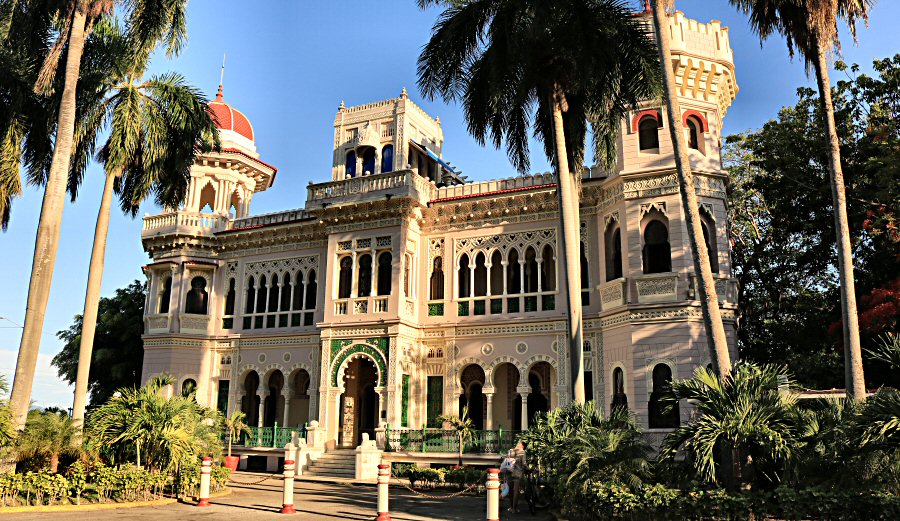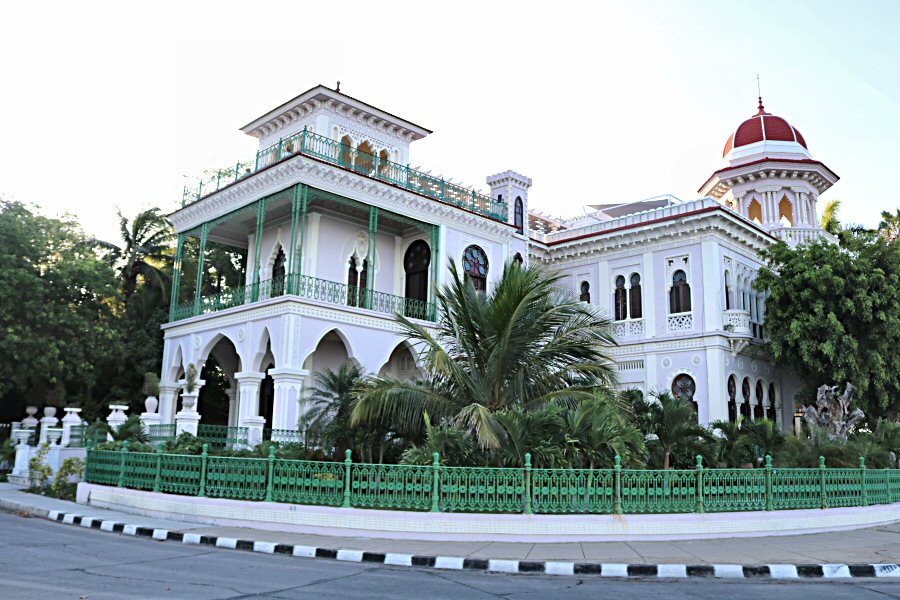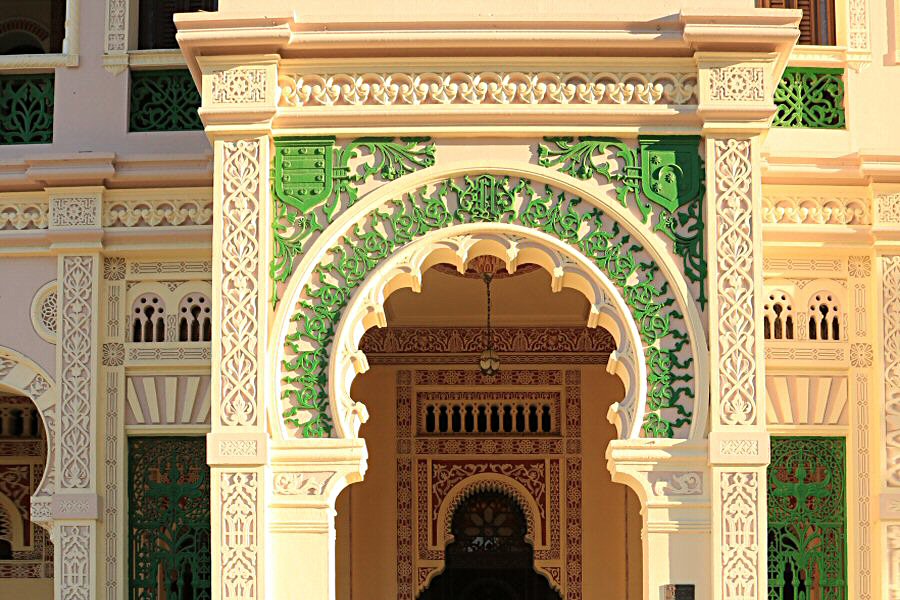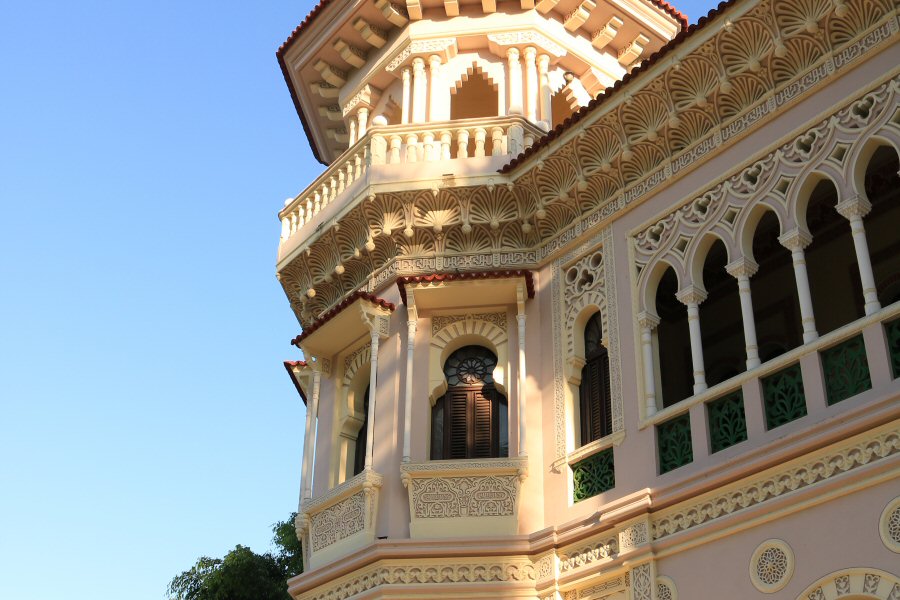
![]()
History
There used to be a house built by Joseph
Díaz on the site where Palacio de Valle is today. Joseph
Díaz is an interesting figure, as it is believed that he is
the first European that settled in Jagua. It is said that he
came to the island with the second voyage of Christoph
Columbus (1493-1496) and settled on the land that he
baptized as Amparo in the area called Punta Gorda today
(formerly Tureira). As it can be understood, Joseph Díaz had
settled on the island long before the Spanish invasion,
launched by Diego Colón, the governor of Hisponiala and son
of Christopher Columbus, by sending Diego Velázquez to the
island in 1512.
Joseph Díaz was in
good relations with the local people, the Siboneys, so that
oneday he met the beautiful native Indian Anegueía that gave
him many children. Even though, he was adapted to the
customs of the local people and learned many arts and crafts
from them, his dream was to build a house resembling those
in Seville and Granada.However, his resources and facilities
were not enough to build a mansion of that size. According
to the legend, he asked goddess Jagua (the main goddess of
Siboneys) for help in building the house that he was
dreaming. His wish came true, and after a while, a beautiful
Mudejar style house emerged on the land where Palacio de
Valle is today. However, the beautiful Anegueía believed
that it was the work of the evil spirit of Mabuya (a
long-tailed lizard), and she asked the gods for help, so
that soon the house was destroyed to its foundation.
A few centuries
later, Spanish merchant Celestino Caces, who wanted to build
a country house in the Spanish-Moorish mix, bought the land
adjacent to Amparo, but this building, which he named Quinta
Morisca, did not turn out as he wanted and for various
reasons, he could not complete the construction.
When he was retired
from business, he sold the incomplete house to Alejandro
Bonifacio Suero Balbin, the Spanish merchant from Ciego de
Avilla. After a short time, Balbin gave the house as a
wedding present to his daughter Amparo Teresa Andrea
Bernarda de la Concepción Suero Rodríguez (1885-1969) that
married the wealthy Austrian merchant Acisclo del Valle y
Blanco (1865-1919). Acisclo del Valle y Blanco was the owner
of several sugar mills. Like the previous owners of the
house, he wanted to give to the country house a Moorish
style. The transformation of the building into a sumptuous
building was entrusted to the Venetian architect Alfredo
Colli and the master builder Juan Suárez. The construction
began in 1913 and completed in 1917, at a cost of one and
half million pesos. Unfortunately, Acisclo del Valle y
Blanco could enjoy the magnificant mansion just for 2 years,
as he died due to heart attack in 1919. In 1922, his widow
Amparo Teresa, the owner of the house, traveled to Spain
with her eight children and the remains of her husband that
was buried in Antiguo Cementerio de Reina in Cienfuegos. The
remains of Acisclo del Valle y Blanco were transfered to the
family pantheon in Arriondas, Spain where they would rest
together forever.
In the late 1950s,
an investment company (in fact mob) bought the land that
included the house, to convert the building into a casino,
but the city administartion after the revolution blocked
this intention. Nowadays, it is a government building,
occupied by a very fine restaurant of the Palmares Hotels
chain, specialized in shellfish, and a lively bar-terasse
that provides an almost panoramic view of the bay and its
surroundings. It is also the venue for cultural events.
Palacio de Valle is the National
Monument of Cultural Heritage of Cienfuegos.



